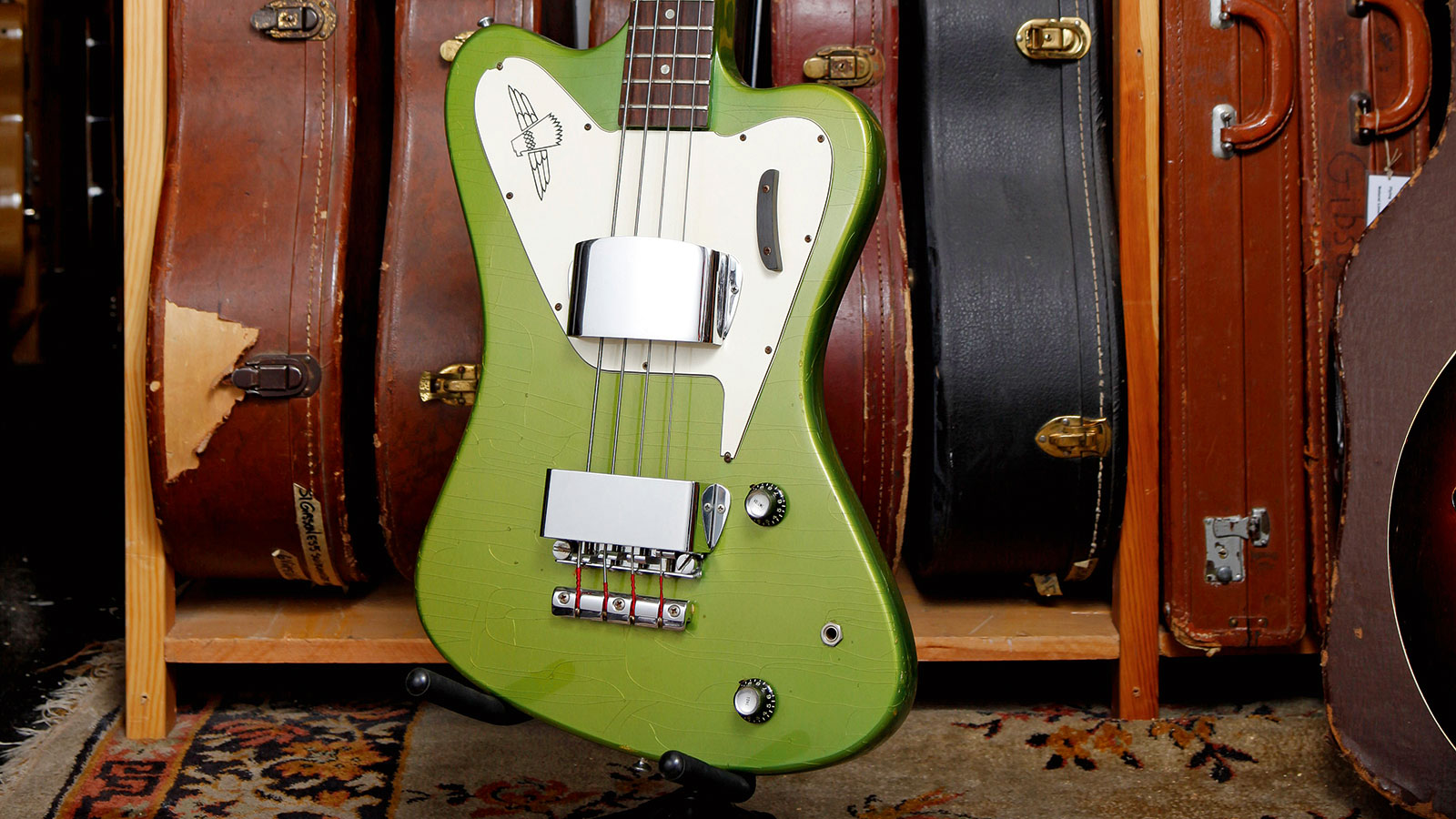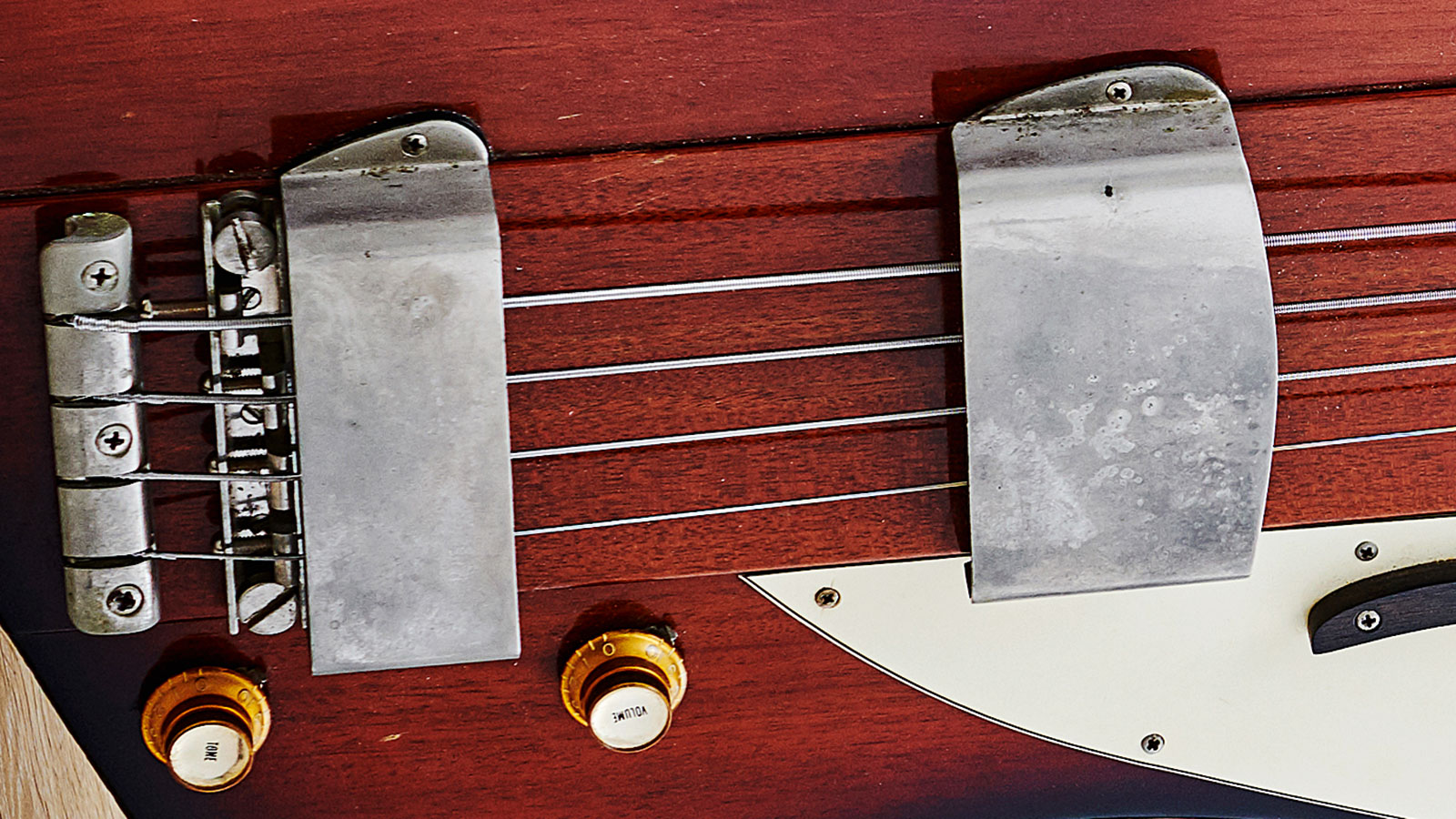The story of Gibson’s Thunderbird – the tricky, difficult but brilliant design that modernized bass guitar
This Thumpin' Thursday, let’s go way back to trace the history of an iconic bass with a body shape that remains radical to this day

Announced in spring 1963, the Gibson Thunderbird bass guitars originally appeared as two distinct models: the single-pickup Thunderbird II and the dual-pickup Thunderbird IV. There were no I or III models, rather the II and IV designations conveniently sat betwixt their six-string siblings, the Firebirds (models I, III, V and VII).
All six appeared together as a series intended to modernize Gibson’s solidbody line. The firm had attempted something similar in 1958 with the release of the ‘modernistic’ Flying V and Explorer, though production was halted by the following year.
In the early 60s, Fender was leading the pack with its colorful, forward-thinking designs. The 34-inch scale Precision and Jazz Basses were unprecedented successes that had turned the music world on its head, while their automotive-influenced custom color chart and less traditional forms spoke to the zeitgeist.
Instrument builders overtly referenced the names, finishes and geometry of hot-rod culture. It was a phenomenon instantly identifiable in a booming electric guitar industry that stretched from coast to coast – notably Fender in the West and Gretsch in the East.
If Gibson were to keep up, it needed to respond. And what better way to return to the drawing board than with a bona fide automotive designer? Well, that was the thinking behind the first run of Firebird/Thunderbird designs anyway when Gibson hired Raymond Dietrich. As it turned out, these so-called ‘reverse’ guitars proved especially difficult and costly to build.
Indeed, Gibson still maintains the reverse ’Bird is one of the trickiest to produce. And while a laminated neck-through-body construction provides great stability and tone, reverse Thunderbirds are especially prone to headstock breaks (aka Firebird disease) – a problem exacerbated by the instruments’ heavy Kluson tuners.
The reverse Thunderbirds, it seems, were doomed from the start. Sales were dire. And with Fender claiming a patent infringement of its Jazzmaster body styling, Gibson was further prompted to overhaul the entire range.
All the latest guitar news, interviews, lessons, reviews, deals and more, direct to your inbox!
What better way to return to the drawing board than with a bona fide automotive designer? Well, that was the thinking when Gibson hired Raymond Dietrich
Interestingly, however, the ‘non-reverse’ design that followed – a virtual mirror image of the reverse counterpart – appears much closer to the Fender offset with respect to body and headstock profile. It seems reasonable to presume that the Fullerton firm was distracted enough by its CBS takeover during 1965 not to interfere.
Regardless, the revamped Thunderbirds arrived that year featuring glued-in necks. As before, the II and IV were structurally identical – the main difference being pickups and electronics (the IV sported an extra volume knob as per its second pickup).
From its inception back in ’63, one of the range’s main selling-points was Gibson’s all-new custom color chart, and these options extended into the latter half of the 60s.

Taking inspiration from Fender, the finishes included Ember Red, Frost Blue, Polaris White, Cardinal Red, Heather, Pelham Blue, Golden Mist, Kerry Green, Silver Mist and Inverness Green. Exotic-sounding enough, but the regular, less expensive sunburst finish proved to be the most popular choice by far.
Alas, the Thunderbirds were not deemed popular enough to remain in production beyond the 60s, and with sales dropping off towards the end of the decade manufacturing ceased in 1969.
1964 Gibson Thunderbird II
1. SERIAL NUMBER
Six digits on rear of headstock
2. HEADSTOCK
Asymmetrical reverse design; tuners on bass side; raised middle section; black/ natural finish
3. PLASTICS
Gold Gibson logo on black truss rod cover; three-ply (w/b/w) pickguard with bevelled edge and Firebird emblem; two metal cap/reflector knobs labelled Volume and Tone
4. HARDWARE
Nickel-plated: Kluson tuners with metal buttons; fully adjustable four-saddle bridge; stop tailpiece; bridge and pickup covers. Front-loading jack socket; two metal strap buttons; wooden tug bar

5. PICKUPS & ELECTRONICS
Single bespoke humbucker; two 500k pots (volume and tone controls)
6. BODY
Asymmetrical reverse design; 11⁄2-inch depth; neck-through- body construction (two-piece mahogany); glued-on mahogany sides/wings; raised middle section; standard sunburst finish
7. NECK
Two-piece mahogany neck- through-body construction; unbound 20-fret Brazilian rosewood fingerboard with pearl dot inlays; 34-inch scale (often measured slightly longer)
The Evolution of Gibson Thunderbirds
- Spring 1963 Thunderbird II & IV announced (reverse)
- Late 1963 Thunderbird II first shipped
- 1964 Thunderbird IV first shipped
- 1965 Non-reverse models
- 1966 Circa 500 shipped (II & IV)
- 1967 120 shipped (IV)
- 1968 Circa 100 shipped (II & IV)
- 1969 Discontinued 1976 Thunderbird ’76 released; reverse; dual pickups; Sunburst, Natural Mahogany and Ebony finishes
- 2022 Gene Simmons G2 Thunderbird released; reverse; dual pickups; Ebony finish
Rod Brakes is a music journalist with an expertise in guitars. Having spent many years at the coalface as a guitar dealer and tech, Rod's more recent work as a writer covering artists, industry pros and gear includes contributions for leading publications and websites such as Guitarist, Total Guitar, Guitar World, Guitar Player and MusicRadar in addition to specialist music books, blogs and social media. He is also a lifelong musician.


